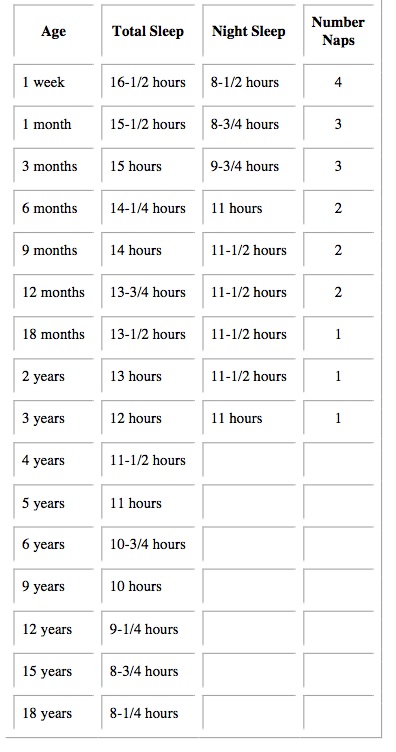 “Baby and Child Sleep” – Google those words (maybe you already have?), and you’ll be overwhelmed by the thousands of websites, articles, and books that hold the promise of a good night’s sleep. Yes, sleep is a hot topic, and when our children sleep, where they sleep, how much they sleep, and even what they wear to sleep is the subject of countless debates in online chat groups, playgroups, and baby yoga classes across the globe.
“Baby and Child Sleep” – Google those words (maybe you already have?), and you’ll be overwhelmed by the thousands of websites, articles, and books that hold the promise of a good night’s sleep. Yes, sleep is a hot topic, and when our children sleep, where they sleep, how much they sleep, and even what they wear to sleep is the subject of countless debates in online chat groups, playgroups, and baby yoga classes across the globe.
When I look back on my experience as a new mom, it doesn’t surprise me that parents are up at 2 a.m. searching the web for guidance. I left the hospital with my baby in my arms and a tote bag full of pamphlets and handouts on breastfeeding, diaper changing, belly button care – you name it – but absolutely no information on baby sleep. Granted, that was 11 years ago, and things are starting to change. But most parents I work with have the same experience today.
There are five essential sleep facts that I think every parent should know. Understanding these facts will help you set your child up for healthy sleep and help you understand why your child may be struggling with sleep.
1. Putting yourself to sleep is a learned skill.
Did you know that we all wake up numerous times every night? These wake-ups are called partial arousals, and they occur as we cycle in and out of different stages of sleep. We may adjust our pillow during partial arousal or look at the clock, but then we put ourselves right back to sleep quickly. Most adults navigate these arousals easily because they know how to put themselves to sleep without assistance.
For the first few months of life, many babies need help settling, and I encourage you to use whatever soothing techniques work to help your baby sleep. But eventually, if you don’t start to fade your involvement and are still doing all of the work at bedtime by rocking, patting, nursing, singing, or walking your baby to sleep, they will wake up fully during partial arousals and require rocking, patting, nursing, and walking all over again to go back to sleep.
Babies need the opportunity to practice putting themselves to sleep at bedtime so that they can put themselves back to sleep in the middle of the night. Don’t underestimate your child’s ability to master this skill. Babies can and will learn if given a chance!
2. Timing of sleep matters.
We all have a circadian rhythm- an internal clock that tells us when to be awake and asleep – and our bodies don’t like it when we operate off of that rhythm. If your child is awake when they’re supposed to be asleep, their body will stop producing melatonin, the drowsy hormone, and start producing cortisol, the stress hormone. Cortisol acts like adrenalin – it stimulates our children and makes it hard to fall asleep. It also makes it hard to stay asleep and causes nighttime wake-ups, which triggers more cortisol production, which causes early rising, which triggers more cortisol production, making it hard to nap.
You can see how quickly a vicious cycle can develop! This is why it’s so important to know your child’s sleepy cues and ideal awake windows (the period that your child can be awake without becoming overtired). Try to put them down for sleep while their body produces melatonin, not cortisol. (FYI – most children are “wired” to be up for the day between 6 a.m. and 7:30 a.m. and asleep for the night by 6 p.m. – 7:30 p.m.).
3. Quantity of sleep matters.
Children need different amounts of sleep at various stages of development. Don’t assume that your child needs less than the average amount of sleep – most children aren’t off the averages by more than one hour.
 4. Quality of sleep matters.
4. Quality of sleep matters.
Children need non-fragmented sleep to be fully rested. Your one-year-old may be getting the 11-1/2 hours of sleep at night that they require, but if they’re waking up two or three times, it’s not quality sleep.
Unnecessary feeding fragments sleep. If your child is healthy, growing well, and your pediatrician tells you that your child no longer needs to receive calories at night – in other words, if you’re feeding your baby during the night only because it puts them back to sleep – then it’s time to start gently eliminating night feeds. By six or seven months of age, many healthy babies can go 11-12 hours at night without eating.
Underlying medical conditions can also fragment sleep. Reflux, asthma, allergies, enlarged tonsils, and adenoids are conditions that often wake children up during the night. If you suspect a medical reason why your child isn’t sleeping, don’t hesitate to address those concerns with your child’s pediatrician.
Motion keeps the brain in a light sleep, which is not restorative. The occasional car, stroller, or swing nap is acceptable and often unavoidable. Still, if your child relies on motion to fall asleep after the first few months of life, their quality of sleep is compromised. Stopping the car or stroller or swing after your child falls asleep can be helpful short-term but not the best solution over time. How many of us feel rested after snoozing in the car?
5. Sleep environment matters.
Have a dedicated space for your child that’s conducive to restful sleep. Children learn quickly that this space is for sleeping, and being placed in that space will cue them for sleep.
Keep the room dark to encourage the production of melatonin. Black-out shades work especially well, especially during the summer when it’s light out until 8 or 9 p.m. They can also nip early rising in the bud. Night lights should be 4 watts maximum and not too close to the crib or bed. Remember to expose your child to natural light when they’re awake to help set their internal clock.
Avoid stimulating patterns on sheets and walls, pictures near the crib or bed, and mobiles and toys (toys = playtime). They can stimulate alert children and interfere with the process of falling asleep.
Consider a white noise machine. It can block out wakeful sounds and cue your baby for sleep when used in conjunction with a consistent bedtime routine. Also, pay attention to temperature. The ideal sleeping temperature is between 68 and 72 degrees Fahrenheit.

























[…] is that only a tiny percentage of the population needs less than the average amount of sleep. (See my July 2013 blog for averages for your child.) Up for the day at 6:30 am means asleep by 8:30 pm or 9:00 pm at the latest – a challenging […]